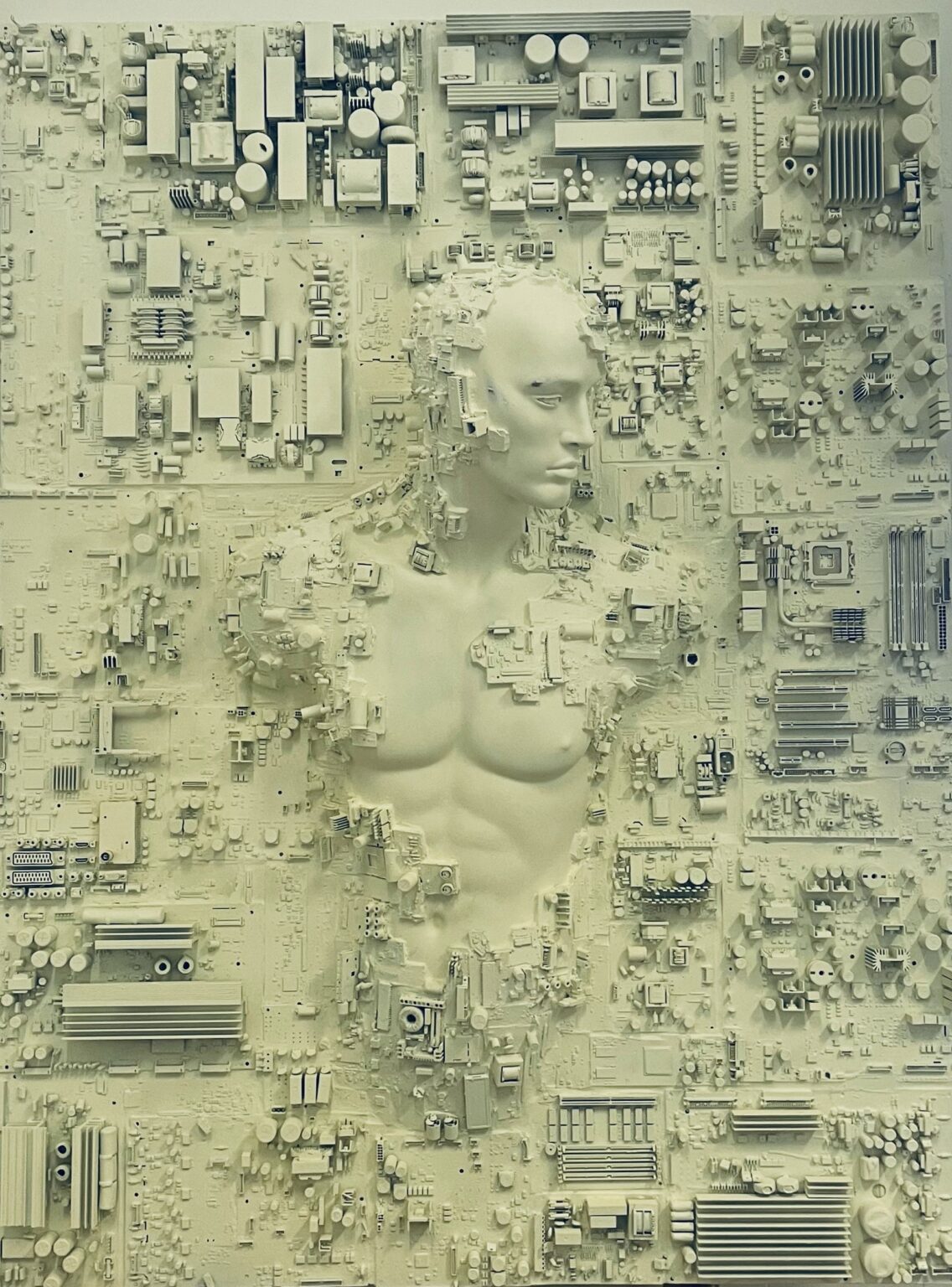
Adonai Sebhatu is an Italian artist of Eritrean origin based in Bologna. His creative path was shaped by an adolescence spent in the city’s underground environment. This context provided him with a fertile ground of influences, many of them often at odds with each other. However, it is in this mixture of experiences that the artist has found inspiration for his conceptual path.
Trained as a surveyor during his schooling, Adonai later pursued a career as a designer, putting his skills into practice and refining his aesthetic sense. This process gradually led him toward a more irrational and artistic dimension, where he sought to give voice to the many facets of his identity, mixing the influences of his origins with the cultural environment in which he grew up.
His artistic journey took a significant turn when he began painting artwork that explored imagery composed of electronic components.
Over time his artistic production has subsequently embraced a more explicit approach to the use of whole pieces or parts of salvaged objects, mostly from WEEE ( Waste Electrical and Electronic Equipment) materials.
The discovery of these materials become a central key to his artistic production for several reasons. First of all, the use of reclaimed WEEE materials represents a statement against waste and overconsumption in contemporary society. These materials are often considered obsolete or unusable, but Adonai transforms them by trying to reshape and enhance the expressive properties of the material, demonstrating that there is value in what many consider waste.
This message of sustainability and environmental awareness is a crucial aspect of his work, and his art serves as a vehicle to raise awareness of these issues.
The use of these salvaged materials also introduces a historical and narrative dimension to his works. These objects tell stories.
Every discarded electronic component has had a function in daily life, and their use in works of art brings with it a sense of continuity and rebirth.